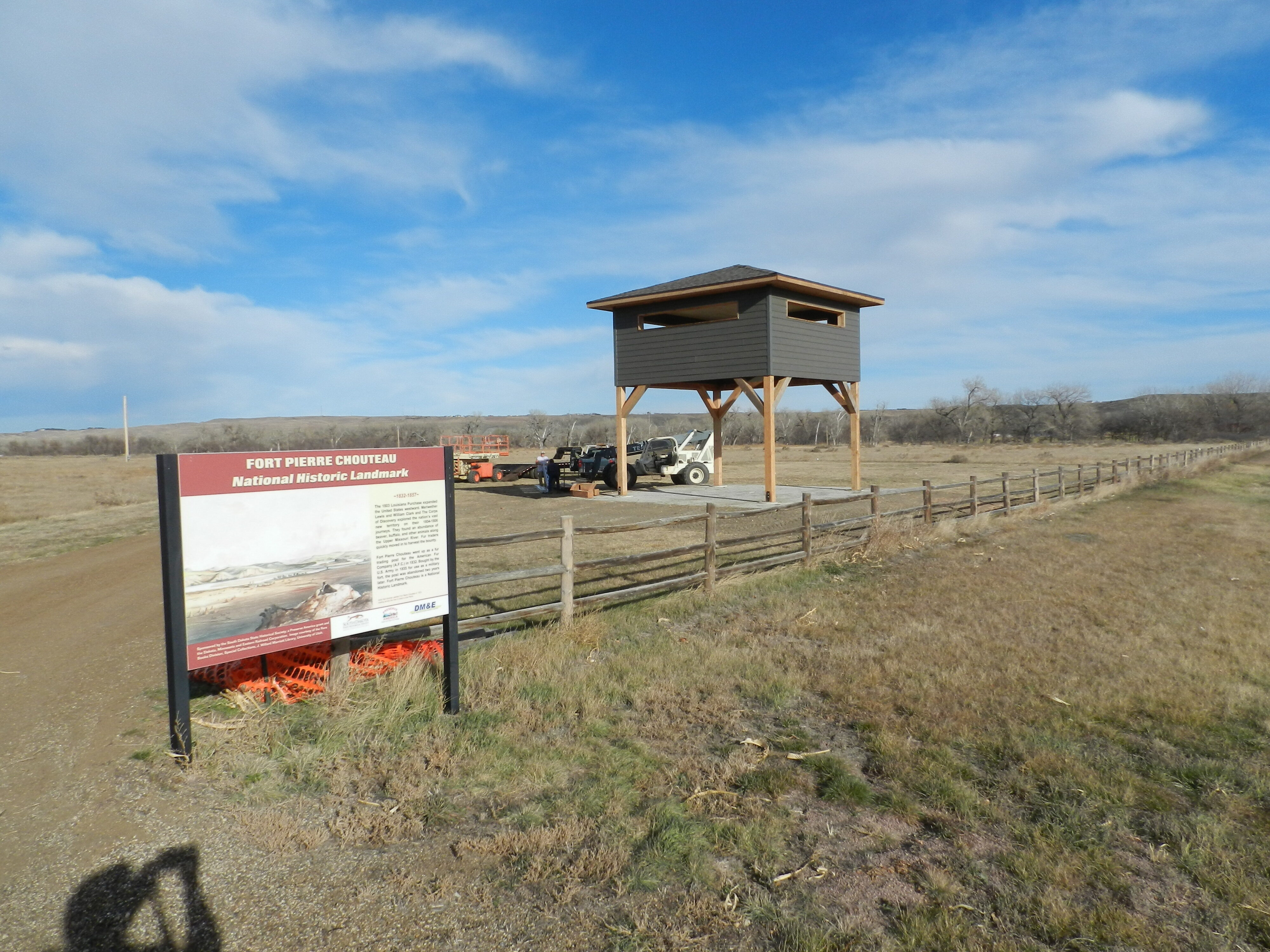Fort Pierre Chouteau Site National Register of Historic Places


Fort Pierre Chouteau stood as a symbol of the relations between Euro-Americans and American Indians and their interdependence for nearly 25 years. Continually growing in size and influence, the fort evolved into a trading center where the exchange of material goods from Euro-American and American Indian cultures occurred in ways that significantly affected both societies. Fort Pierre Chouteau was one of the most important fur trade forts of the western frontier. Not only was the fort one of the largest and best-equipped trading posts in the northern Great Plains, but the trading activities at the site epitomized the commercial alliance between American Indians and Euro-Americans. Its location on the Missouri River assured the success of the fort’s fur business.
John Jacob Astor, head of the American Fur Company, decided to expand operations into the Upper Missouri region during the 1820s. Built in 1832, Fort Pierre Chouteau quickly became the most strategic post in the Western Department of the American Fur Company. Located halfway between the headquarters at St. Louis and the northernmost posts in North Dakota and Montana, Fort Pierre Chouteau was the logical place for American Fur Company officials to gather and discuss company business.
Established in 1832 by Pierre Chouteau Jr. to replace nearby Fort Tecumseh, Fort Pierre Chouteau became one of the company’s headquarters of the Upper Missouri region. Its trade area covered thousands of miles of prairie. During its active years, the post received, processed, and shipped hundreds of thousands of beaver pelts, deer skins, and buffalo hides destined for European and eastern markets. Through Fort Pierre Chouteau and its subsidiary trading posts, the Plains Indians found their primary contact with Euro-Americans. A new-found prosperity followed that led the American Indians to accept, for a time, the white man’s encroachment on the Plains.
The American military entered the northern Great Plains in the 1850s. The United States Army bought Fort Pierre Chouteau in 1855 making it the first military fort in the Upper Missouri region. After purchasing the fort, the army conducted nearly $20,000 worth of repairs to meet army standards. The army also added numerous portable clapboard houses they transferred to Fort Pierre by steamship. The old fur post proved to be in such a poor state of repair, however, that the army partially dismantled and completely abandoned it a few years later. The site of Fort Pierre Chouteau is now marked by a stone monument commemorating its renowned part in the Missouri fur trade.
No visible remains exist at the site today. The fort undoubtedly underwent numerous additions and changes. Travelers up the Missouri during the first half of the 19th century described the fort. The most reliable of those descriptions is Prince Maximillian’s, made in 1833. He estimated each side of the fort to be about 300 feet long. The prince also described Mr. Laidlaw’s house (the bourgeois) with adjacent houses for clerks. According to him, stores stocked with furs and trade goods were located opposite the living quarters. George Catlin visited Fort Pierre the previous year and naturalist John J. Audubon a decade later. Their journals and the memoirs of members of their parties provide a picture of the fort’s construction. Because the fort was active for over 25 years, the numerous physical changes that took place caused quite a variation in the content of these accounts.
The outline of the old stockade was still visible at the turn of the 20th century when historian Charles E. DeLand studied the site. In addition to writing a history of Fort Pierre Chouteau, he also collected and published much of the official military correspondence related to the army’s purchase of the fort in 1855. Historians of the National Park Service did further work on the fort between 1946 and 1951.
Excavations of the fort took place in 1980 and again from 1997 to 2001. A geophysical survey was also conducted in 2007. The archeological excavation uncovered various artifacts such as coins, pottery, fabric, and wooden remnants of the fort itself. Clothing, including moccasins, was also found, indicating the close relationship between Euro-American settlers and Native Americans.
Distance Unit: